Mystery AMD Radeon GPU cooler spotted on Chinese forums is larger than RX 7900 XTX, with a massive heatsink and 3x 8-pin connectors — possibly the RX 7950 XTX that never was
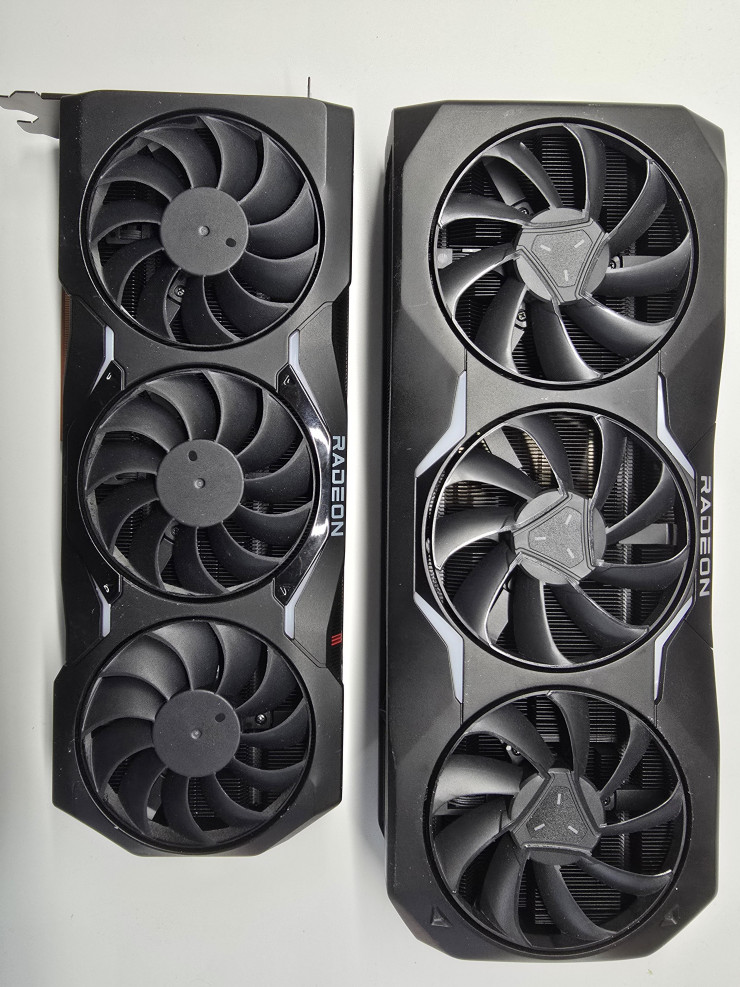
A massive prototype cooler from AMD’s Radeon RX 7000 series has surfaced online, sparking speculation that AMD once considered a true RTX 4090-class GPU during the RDNA 3 era. The leak originated from Korean forum Quasarzone, where a user named FP32 shared images of a mysterious shroud purchased from the Chinese marketplace Xianyu. At first glance, it looks like a standard RX 7900 XTX reference cooler, but a second look reveals another story entirely. Thankfully, the user broke down everything, comparing the cooler with an actual, retail RX 7900 XTX.
The prototype measures almost 34 cm in length compared to 29 cm for the RX 7900 XTX, and is nearly 5.5 cm thick, taking up three slots with a triple-fan configuration. It has slightly different cutouts for LEDs as well, but it largely looks the same aesthetically.
The most eye-catching feature is its power design, with space carved out for three 8-pin connectors instead of the two seen on the 7900 XTX. This alone suggests a total board power well beyond 450W, making it more akin to Nvidia’s RTX 4090 in scale and power delivery. The heatsink itself has three painted red fins, indicating "RDNA 3," and it's a centimeter longer than the RX 7900 XTX reference edition.
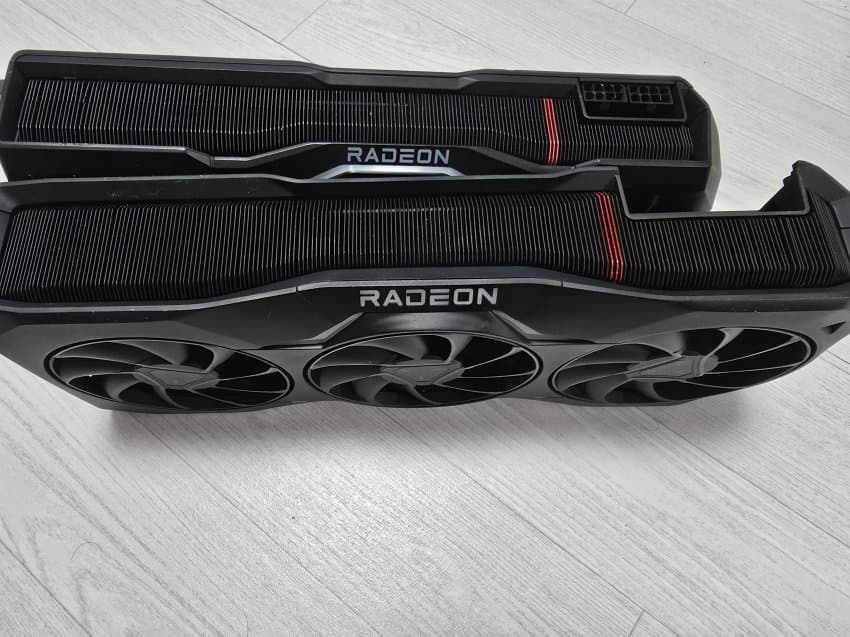
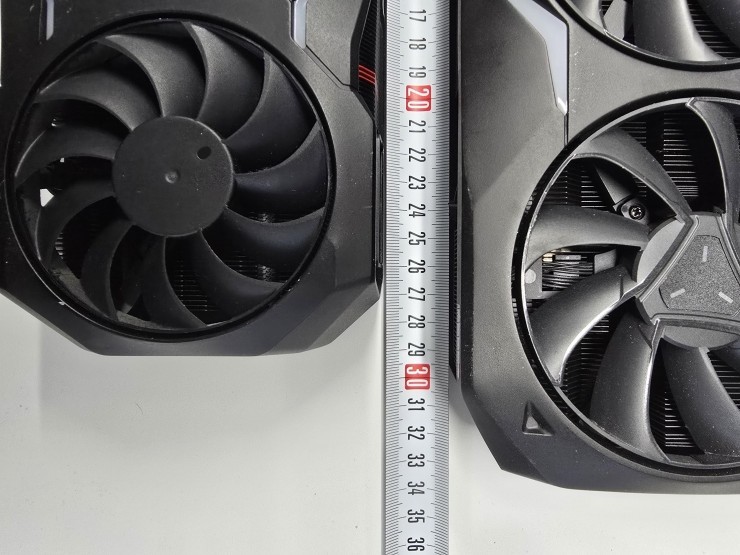
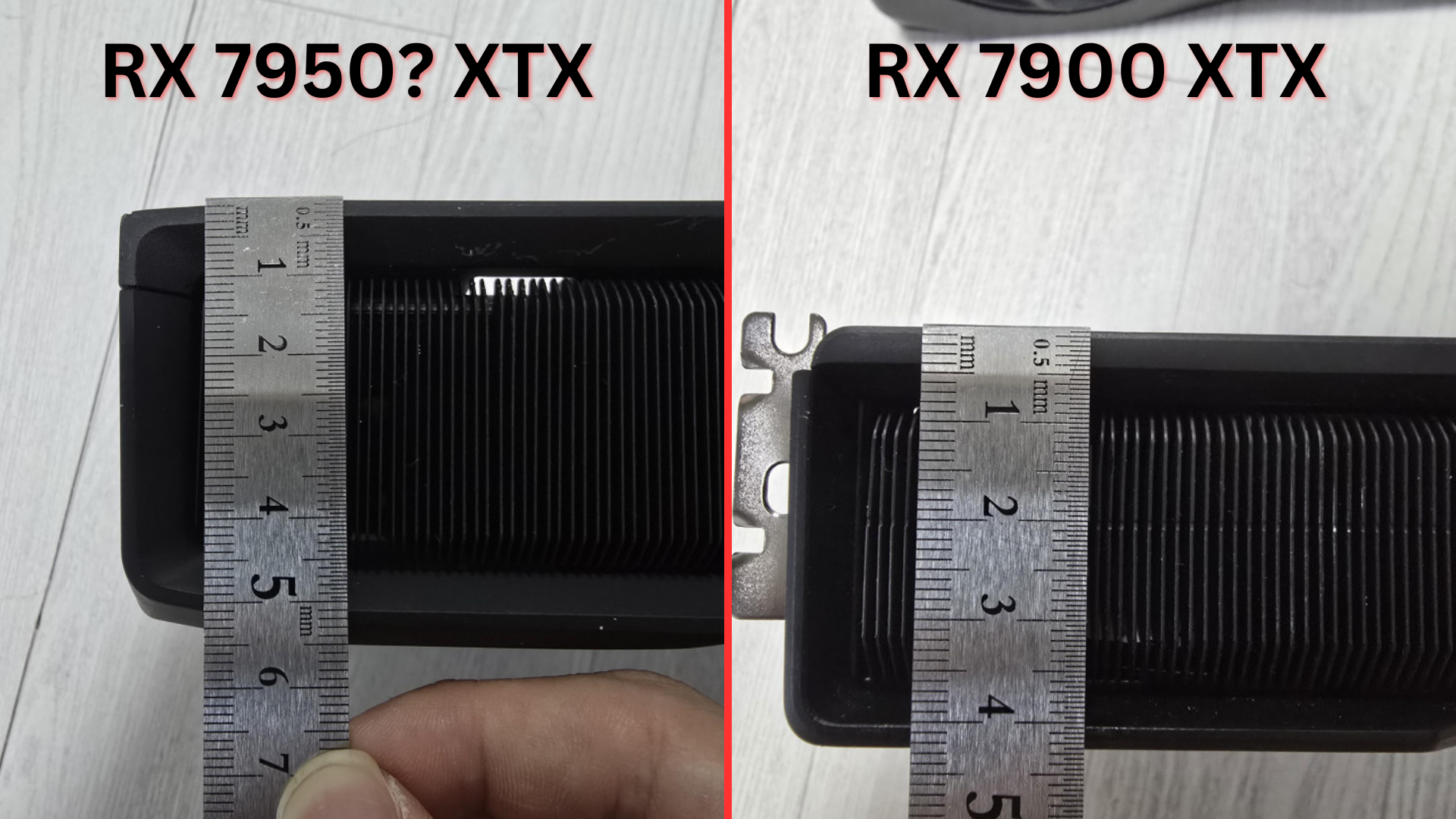
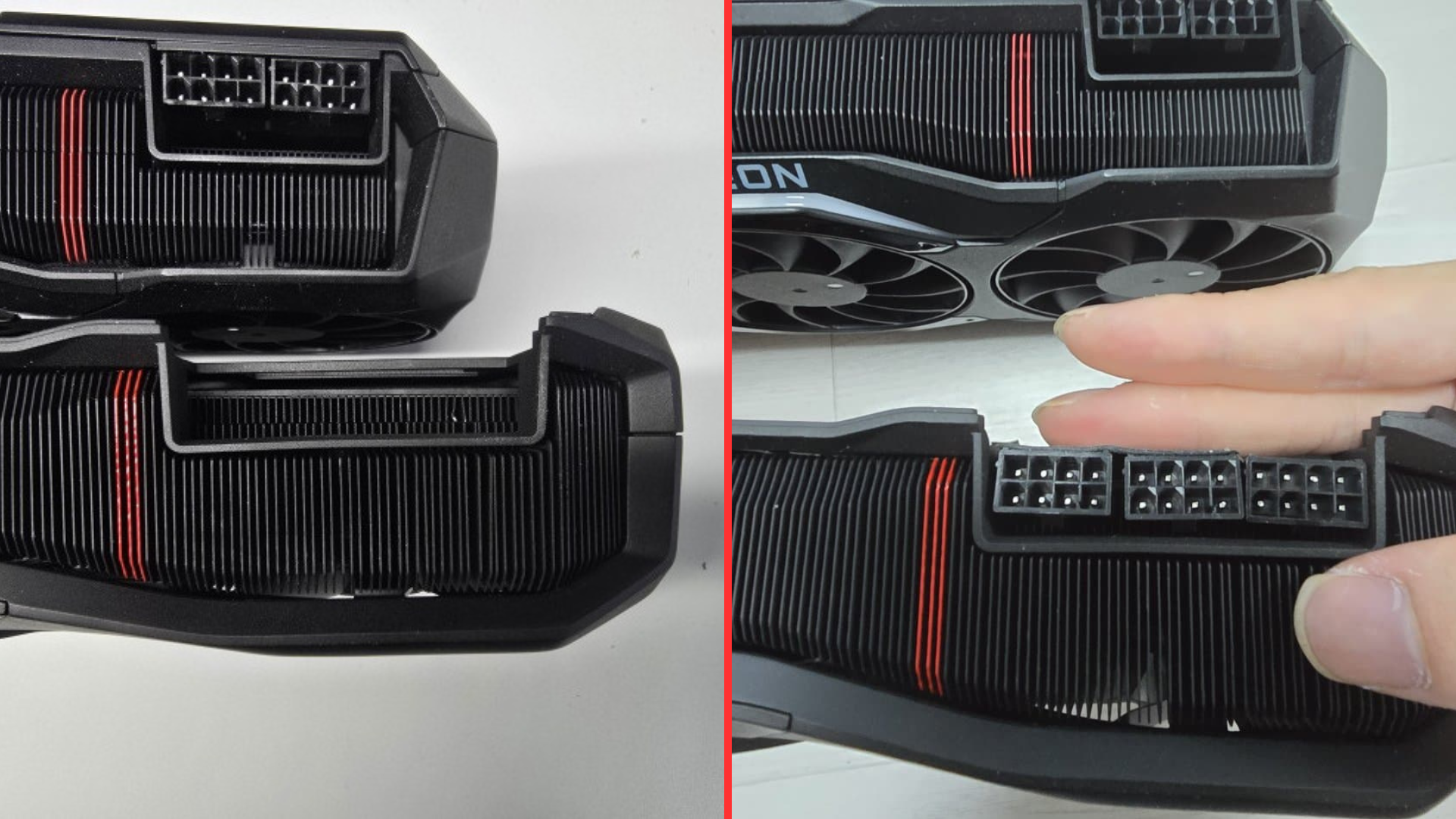
Once opened up, we see a copper baseplate and a heavy heatpipe array, clearly intended for handling higher thermals and demanding loads. The internal layout of this design is decidedly different than the 7900 XTX, further suggesting it was intended for a beefier config. Keep in mind that there was no PCB inside, so it couldn't be connected to a PC for further testing. The cooler also lacks any I/O at the back, so we can't (accurately) guesstimate what model this was going to house.
There are a bunch of serial numbers stickered onto the shroud, but they don't return any info when reverse-searched for; again, a dead end.
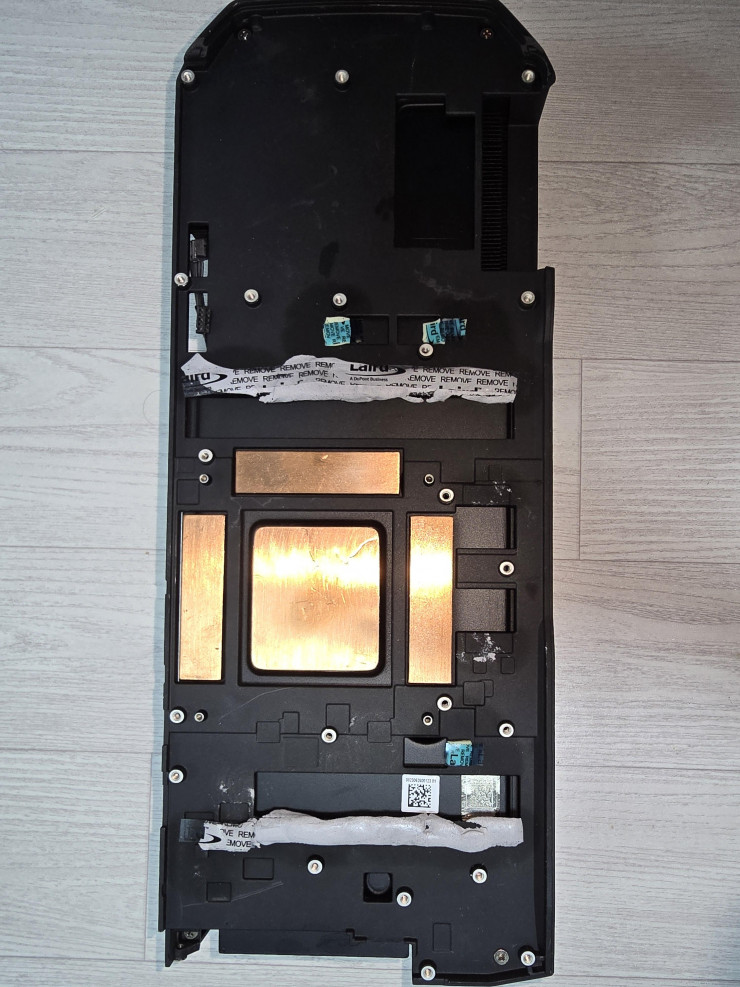
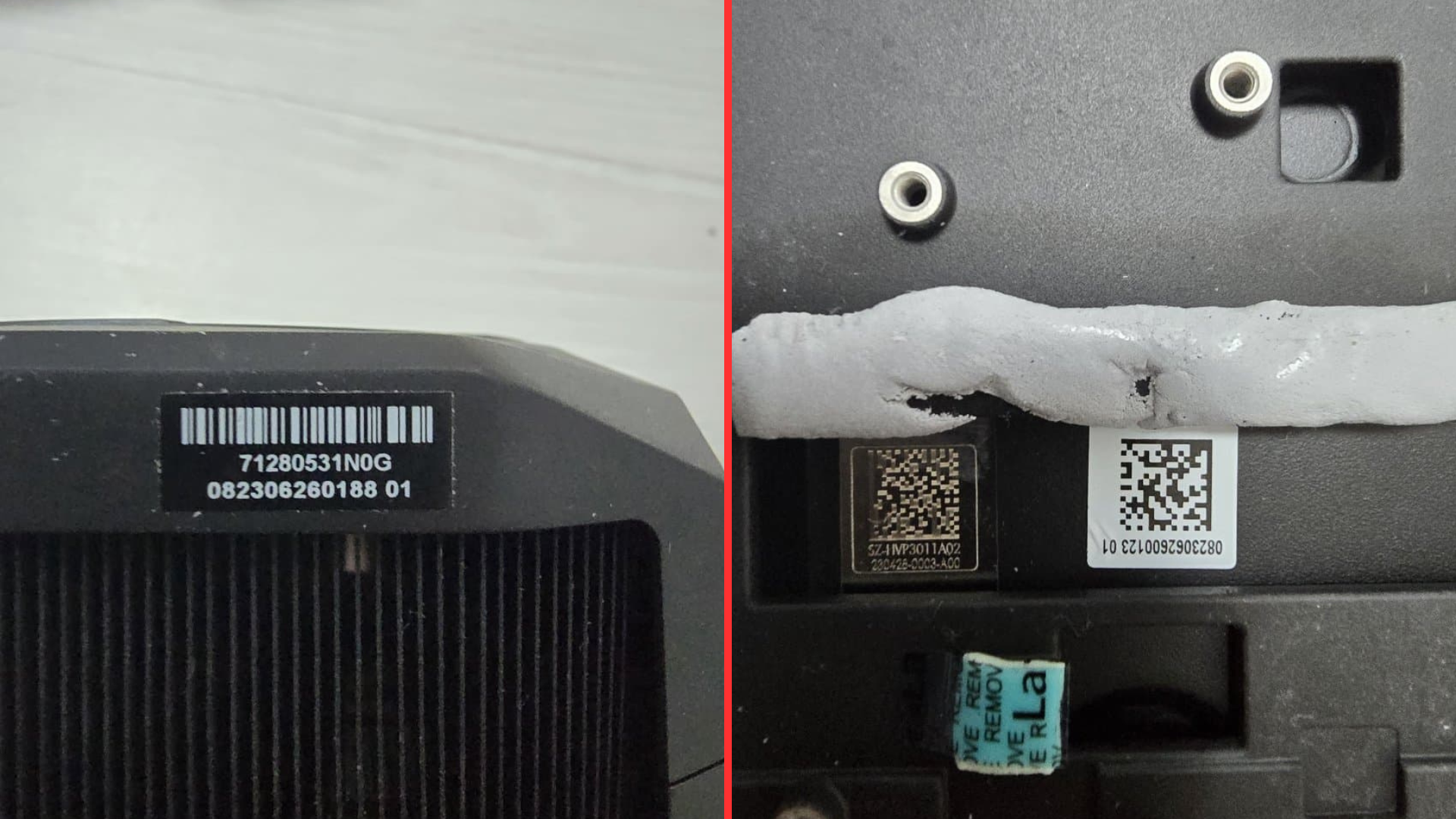
Regardless, with the RX 7900 XTX already running a fully unlocked Navi 31 die at 96 Compute Units, this prototype may have been designed for much higher clock speeds or faster memory configurations. It’s equally possible that AMD experimented with a larger GPU variant that never made it past internal testing. Rumors of models like the RX 7950 XTX or RX 7990 XTX have circulated since 2022, but this is the first physical evidence pointing toward AMD’s exploration of a more aggressive “halo-tier” design for RDNA 3. Even a year later there was still speculation over Team Red's unreleased cards that, in hindsight, never came to be.
Such a GPU could've possibly bridged the huge gap between the RTX 80-class and 90-class cards with a middle-of-the-road option, even today. But the cooler itself is incompatible with retail designs due to its unique mounting pattern, leaving its original purpose a mystery. What’s clear is that AMD ultimately shifted focus away from the ultra-enthusiast segment, choosing to compete on efficiency and price-to-performance rather than raw power. This prototype is a reminder of what might have been if AMD had decided to go head-to-head with NVIDIA at the very top end.
Get Tom's Hardware's best news and in-depth reviews, straight to your inbox.
Hardware samples like this often surface years after launch, usually as engineering leftovers that make their way into secondary markets. The discovery of this prototype cooler, particularly with its triple-slot, triple 8-pin design, offers a rare look at AMD’s internal experiments and discarded plans, showing that even in the RDNA 3 era, a 4090-class Radeon wasn’t entirely off the table.

Hassam Nasir is a die-hard hardware enthusiast with years of experience as a tech editor and writer, focusing on detailed CPU comparisons and general hardware news. When he’s not working, you’ll find him bending tubes for his ever-evolving custom water-loop gaming rig or benchmarking the latest CPUs and GPUs just for fun.